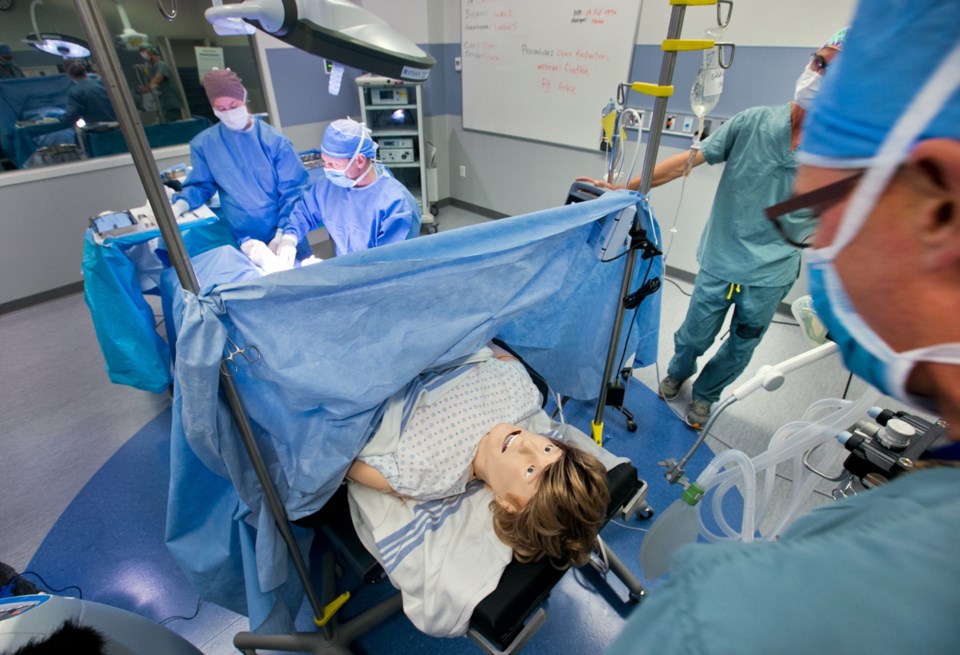Julia Smith, 19, was in surgery Thursday for a broken leg, and the routine operation was going well — until her heart rate sped up.
Because she had a spinal anesthetic, she was awake and talking. She told Dr. Stan Vuksic she wasn’t feeling well and was short of breath.
As her discomfort grew, she asked him: “Am I going to die?”
She wasn’t going to die, although her heart had to be shocked into a proper rhythm. The surgical team expertly rose to the occasion.
But it wasn’t real life they were dealing with. Rather, this was a detailed scenario done with state-of-the-art simulation equipment. The patient was a lifelike mannequin made to respond to and interact with medical professionals, programmed from an adjoining control room to present different challenges along the way.
Such mannequins — there are also child and baby sizes — are a key part of the new $2.9-million Centre for Interprofessional Clinical Simulation Learning at Royal Jubilee Hospital. The centre, which will cost $350,000 a year to run, is a partnership involving Island Health, the University of British Columbia and the University of Victoria.
The 128 students from UVic’s Island Medical Program, run in conjunction with UBC’s faculty of medicine, will be among the beneficiaries. UVic also has 366 nursing students who can take advantage of the centre.
The centre provides students with an opportunity to experience “real-time, dynamic learning” that will serve them well in their careers, said Valerie Kuehne, UVic’s vice-president academic and provost.
“The whole idea is there’s sort of a suspension of disbelief you have to have,” Vuksic said of the simulation experience. “It’s not hard to do, you get right into it in no time. It’s very real.
“Having the mannequin talk back, it’s a step up from our previous equipment.”
Training people in teams will be a big part of the simulation sessions, said Dr. Taj Baidwan, executive vice-president and chief medical health officer for Island Health.
“This is the dawning of a new era where we’re going to be really doing what we’ve been talking about for a long, which is working in teams, learning in teams and making the transition as an organization to one where we’re curious about how things can be done differently,” Baidwan said.
“And simulation is the art of trying things before you go and actually have to do them with patients.”
The result will be better-trained people, said Dr. Dermot Kelleher, the newly appointed dean of medicine at UBC. “It means that as we produce new medical graduates, we’re not just producing more graduates — we’re producing better graduates. We’re producing people who are equipped to deal with acute problems at an early stage of their career.”
Simulation is a growing part of medical training, Kelleher said.
“I think simulation has just gone off by quantum leaps since the days of the simple mannequins,” he said.
The centre is open to those in training, including midwifery students, as well people already on the job.
“Anyone that’s been practising is going to be a part of this,” Baidwan said. “Even the way that we develop the simulations, we’re going to take real things that don’t go as well as you want them go.”
jwbell@timescolonist.com



